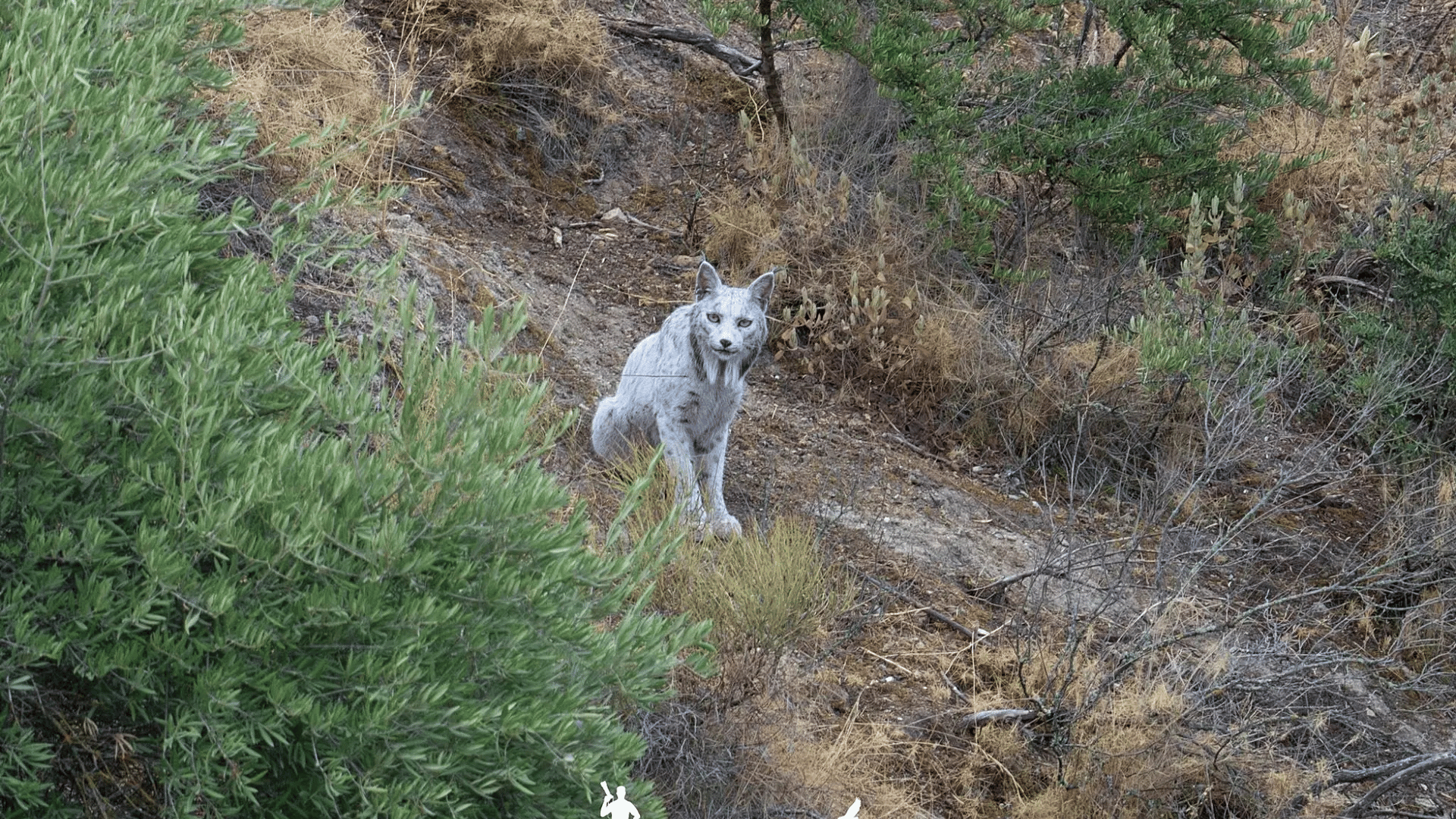For the first time ever, photos of a rare Iberian lynx were captured by an amateur photographer in southern Spain.
The photographer, Ángel Hidalgo, published the images on social media, describing the animal as the “white ghost of the Mediterranean forest”. Hidalgo explained in the post that he had first captured images of the animal in a camera trap he had set up in a wooded area near the city of Jaén.
White Iberian Lynx Sighting

Though the footage was short, it was long enough to distinguish the distinct white coat with dark spots from the brown and black-spotted fur more commonly associated with the species. The media is describing the event as the first time a white lynx has been captured on camera.
“From then on, I started dedicating all of my free time to it,” Hidalgo wrote. “Time passed; hours, days, weeks and even months without success. Many times I was on the verge of giving up.”
His lucky moment came as the sun rose after a rainy night. “When I saw a ‘white Iberian lynx’ for the first time, with its snow-white winter coat and piercing eyes, I was transfixed. I couldn’t believe what I was seeing,” he said.
Although this is the first time the animal has been photographed, those working to protect the species have stated that they were aware of its existence. Javier Salcedo, the coordinator of the EU-funded LIFE Lynx-Connect project, described her as a female named Satureja and said she had been born in 2021.
The lynx reportedly had normal coloring at birth, but her pigmentation changed at some point due to what researchers are speculating could be environmental factors.
“It’s neither albinism nor leucism,” he told the newspaper El País.
“We’re investigating what might have happened,” Salcedo added. “We think it could be related to exposure to something environmental.”
According to Salcedo, this is only the second time researchers have encountered a lynx with this characteristic. Researchers are also taking this sighting as further confirmation that the species population size is recovering, a mere quarter of a century after the animal was on the brink of extinction.


